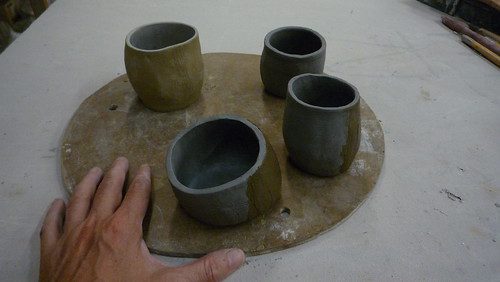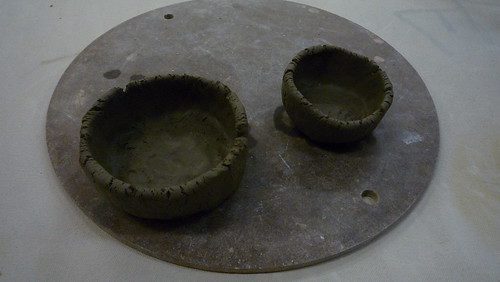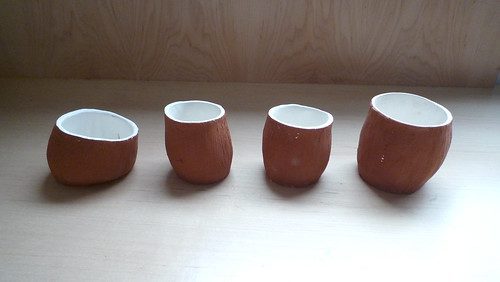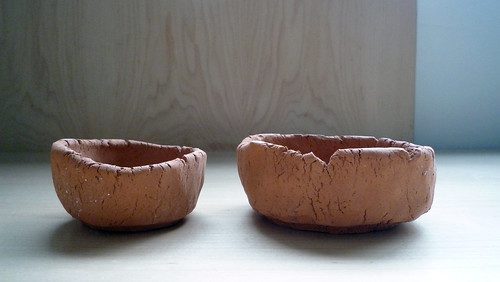As for the clay, now I am teaching myself how to process it. I’m using the best online explanation I could find here.
So first, yeah, I found some clay. I was simply excited to touch the stuff and recognize it as clay: silky, powdery, and if you wet it and rubbed it between your fingers, you could tell, if you’d ever handled slip in a cushy predetermined amateur clay studio like the one I work in in Brooklyn. I’m not good at assessing clay yet; apparently you should roll the clay in question between your palms and if it turns into a worm, it’s good whereas if it falls apart or smears into palmy smaze, it’s not going to be very usable.

- Sauvies Island clay sampling (digging)
Back at PNCA, I’m using the ceramics studio to see if it’s usable, fireable, what it can do — if anything.
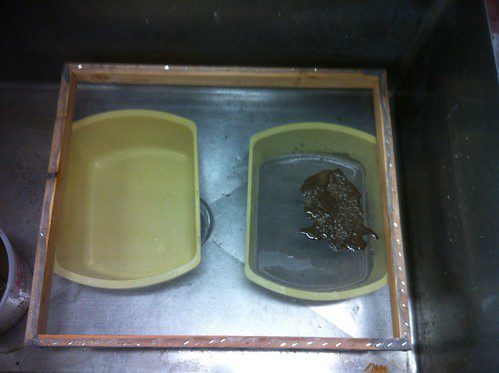
- Straining the mush to get rid of debris (thanks to awesome Liz Lux for help building the strainer frame!)
So that’s where I am. More to come as the clay does its thing.
+++
Update Aug 14
I processed all the clay samples from the four sites.
Willamette #2 I left as slip and Willamette #3 I had to amend with some Kentucky Old Mine #4 Ball (OM-4) clay, apparently from a mine in Kentucky.
I was told* that clay, in order to have any plasticity, must contain a variety of particle sizes or it will dry up and crack, as mine did when I laid it out on the plaster slab.
But as slip, it is surprisingly adherent and is not cracking.
Here are 4 slab-rolled hand-built stoneware cups, coated with slip from Willamette site #2:
Here are 2 pinch pot containers made from the Willamette site#3 clay amended with 20% OM-4 Clay. Even with the added clay, it was still quite lifeless so I knew that slab rolling for hand-built cups was not going to end well:
Next step: firing.
One bisque fire (no 2nd firing):
They are much brighter red than you see here.
+ + + +
* More info on clay elasticity:
http://ceramicartsdaily.org/community/topic/3087-clay-elasticity-or-not/
“For a body to be really workable, you need particles of various sizes. Grog, while rated at a specific mesh size, actually has particles of many sizes.”
Some suggestions from this forum include adding ball clay, which is fine, urine, beer, and bentonite.

